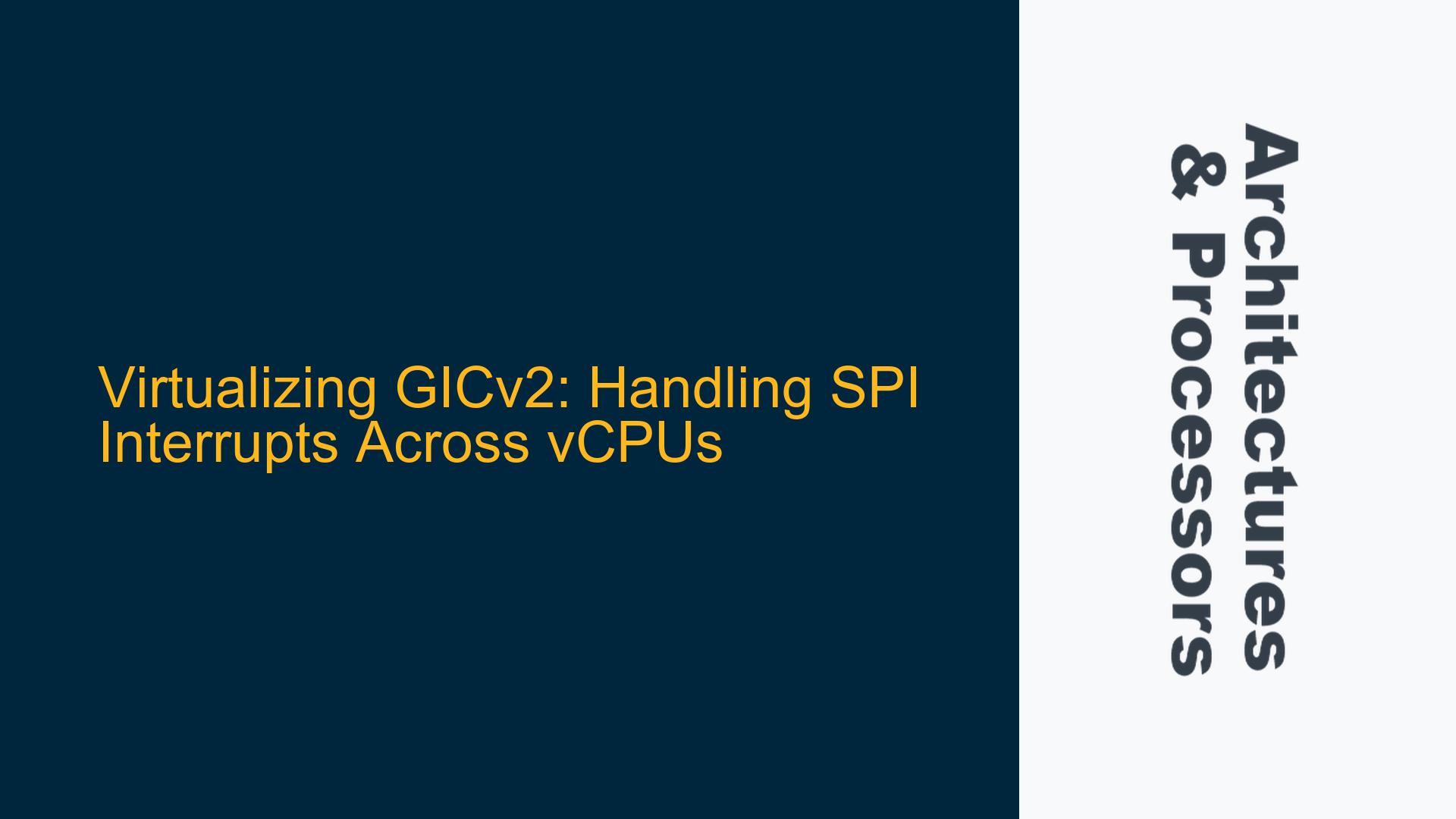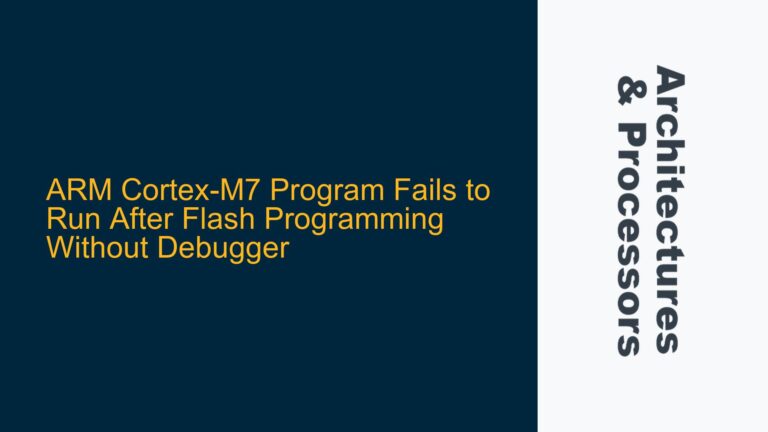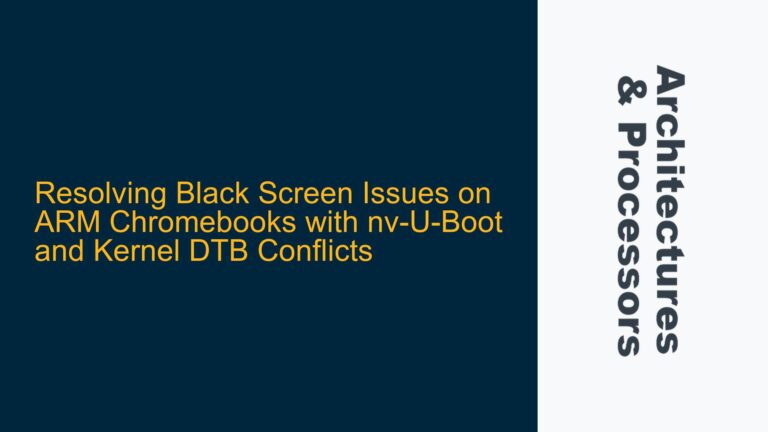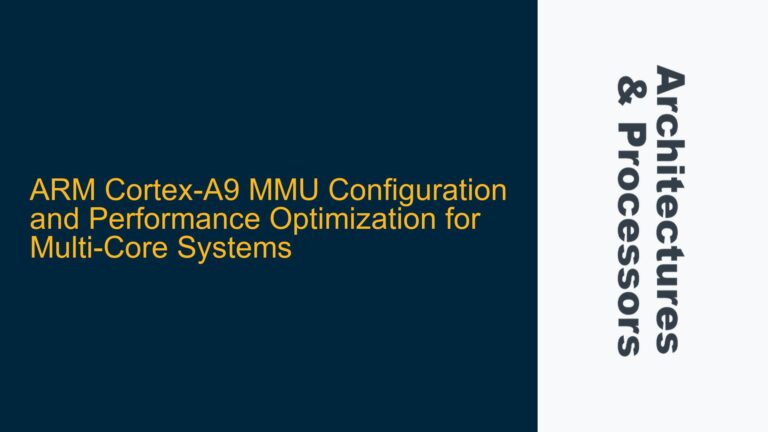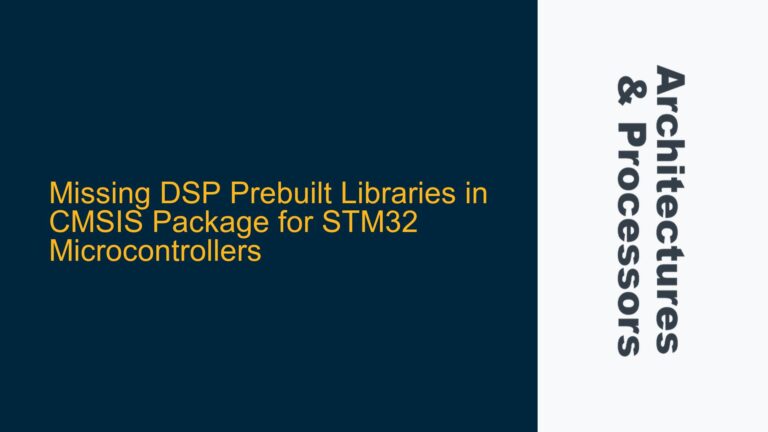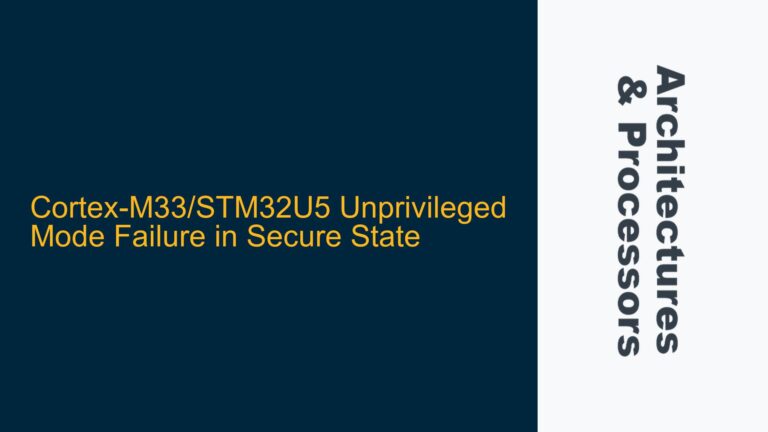GICv2 Virtualization and SPI Interrupt Handling Across vCPUs
In a hypervisor environment where the Generic Interrupt Controller version 2 (GICv2) is virtualized, handling Shared Peripheral Interrupts (SPIs) across virtual CPUs (vCPUs) can introduce complex scenarios. Specifically, when an SPI targets multiple physical CPUs (e.g., CPU0 and CPU1), and the hypervisor is responsible for managing the interrupt lifecycle across vCPUs, several architectural and operational challenges arise. The core issue revolves around the synchronization of interrupt states between the physical GIC and the virtual GIC, particularly when the interrupt is acknowledged by one physical CPU but must be serviced by a vCPU running on another physical CPU. This scenario requires careful management of interrupt acknowledgment, priority drop, and deactivation to ensure correct behavior in the virtualized environment.
The GICv2 architecture operates on a 1-N model, meaning that only one CPU can successfully acknowledge an interrupt, while others may receive spurious interrupts. When an SPI is asserted, it enters a pending state in the GIC. The physical CPU that acknowledges the interrupt transitions it from pending to active. However, if the interrupt is intended for a vCPU running on a different physical CPU, the hypervisor must coordinate the injection of a corresponding virtual interrupt and ensure that the physical interrupt is properly deactivated once the virtual interrupt is handled. This process involves interactions between the physical GIC interface (GICC), the virtual GIC interface (GICV), and the hypervisor’s interrupt management logic.
The key challenge lies in ensuring that the physical interrupt is deactivated only after the corresponding virtual interrupt has been fully handled by the target vCPU. This requires precise coordination between the physical CPUs, the hypervisor, and the virtual GIC interfaces. Missteps in this process can lead to interrupt storms, missed interrupts, or incorrect priority handling, all of which can degrade system performance and reliability.
GICC_EOIR Priority Drop and Virtual Interrupt Injection Mismatch
One of the primary causes of the issue is the mismatch between the handling of the physical interrupt and the corresponding virtual interrupt. When the physical interrupt is acknowledged by one CPU (e.g., CPU0), the hypervisor must ensure that the virtual interrupt is injected into the correct vCPU (e.g., vCPU1 running on CPU1). However, the physical interrupt remains active until it is explicitly deactivated, even if the virtual interrupt has been injected and is being handled by the target vCPU.
The GICv2 architecture requires that the CPU that acknowledged the interrupt (CPU0) must also perform the End-of-Interrupt (EOI) operation to deactivate the interrupt. This is specified in the GIC architecture documentation (IHI0048B), which states that for every read of a valid Interrupt ID from the GICC_IAR, the connected processor must perform a matching write to the GICC_EOIR. This requirement introduces a synchronization challenge when the virtual interrupt is handled by a different vCPU than the one running on the CPU that acknowledged the physical interrupt.
In the scenario described, CPU0 acknowledges the interrupt and performs a priority drop by writing to the GICC_EOIR. However, the interrupt remains active in the GIC distributor. The hypervisor then injects a virtual interrupt into vCPU1, which is running on CPU1. When vCPU1 handles the virtual interrupt and writes to the GICV_EOIR, this action does not automatically deactivate the physical interrupt in the GIC distributor. The hypervisor must explicitly notify CPU0 to perform the deactivation, but this step is often overlooked or improperly implemented, leading to the physical interrupt remaining active indefinitely.
Another contributing factor is the use of the GICC.EOImode setting. When GICC.EOImode is set to 1, the priority drop and interrupt deactivation are separated into two distinct operations. This mode allows the hypervisor to perform the priority drop immediately after acknowledging the interrupt, but the interrupt remains active until the deactivation is explicitly performed. This separation can lead to confusion, as the hypervisor may assume that the priority drop also deactivates the interrupt, which is not the case.
Implementing Cross-CPU Interrupt State Synchronization
To address the issue of SPI interrupt handling across vCPUs in a virtualized GICv2 environment, a systematic approach to interrupt state synchronization must be implemented. This involves ensuring that the physical interrupt is properly deactivated only after the corresponding virtual interrupt has been fully handled by the target vCPU. The following steps outline the necessary actions to achieve this synchronization:
First, when an SPI is asserted and enters the pending state in the GIC, the hypervisor must determine which vCPU should handle the interrupt. This decision should be based on the interrupt’s target list and the current mapping of vCPUs to physical CPUs. Once the target vCPU is identified, the hypervisor must coordinate the acknowledgment of the physical interrupt and the injection of the virtual interrupt.
When the physical interrupt is acknowledged by one CPU (e.g., CPU0), the hypervisor should perform the following steps:
- Read the Interrupt ID from the GICC_IAR on CPU0 to acknowledge the interrupt and transition it to the active state.
- Write the Interrupt ID to the GICC_EOIR on CPU0 to perform the priority drop. Note that this does not deactivate the interrupt; it only lowers its priority.
- Inject a corresponding virtual interrupt into the target vCPU (e.g., vCPU1 running on CPU1) by writing to the appropriate List Register (LR) in the virtual GIC interface (GICV). The LR should have the hardware (HW) bit set to indicate that the virtual interrupt is linked to a physical interrupt.
Once the virtual interrupt is injected, the target vCPU (vCPU1) will handle the interrupt. When vCPU1 completes the interrupt handling, it will write to the GICV_EOIR to signal the end of the virtual interrupt. At this point, the hypervisor must ensure that the physical interrupt is deactivated. This requires the following steps:
- The hypervisor on CPU1 must send a message to the hypervisor on CPU0, notifying it that the virtual interrupt has been handled.
- The hypervisor on CPU0 must then write to the GICC_DIR (Deactivate Interrupt Register) to deactivate the physical interrupt in the GIC distributor.
This cross-CPU communication ensures that the physical interrupt is only deactivated after the virtual interrupt has been fully handled, preventing any race conditions or incorrect interrupt states.
To further enhance the robustness of the solution, the hypervisor should implement additional safeguards, such as:
- Using memory barriers to ensure that all writes to the GIC registers are properly ordered and visible to all CPUs.
- Implementing timeout mechanisms to handle cases where the virtual interrupt handling is delayed or fails.
- Logging and monitoring interrupt handling to detect and diagnose any anomalies.
By following these steps, the hypervisor can ensure that SPI interrupts are correctly handled across vCPUs in a virtualized GICv2 environment, maintaining system stability and performance.
Detailed Breakdown of GICv2 Virtualization and Interrupt Handling
To provide a comprehensive understanding of the issue and its resolution, it is essential to delve deeper into the GICv2 architecture and the virtualization mechanisms involved. The following sections break down the key components and their interactions, providing a detailed explanation of the processes and considerations involved in handling SPI interrupts across vCPUs.
GICv2 Architecture Overview
The GICv2 is a key component in ARM-based systems, responsible for managing interrupts from various peripherals and distributing them to the appropriate CPUs. It consists of two main components: the Distributor and the CPU Interfaces. The Distributor is responsible for prioritizing and routing interrupts to the CPU Interfaces, while the CPU Interfaces handle the acknowledgment and end-of-interrupt signaling for each CPU.
In a virtualized environment, the GICv2 is extended to support virtual interrupts for guest operating systems running on vCPUs. This is achieved through the Virtual GIC (GICV), which provides a virtualized view of the GIC to each vCPU. The hypervisor is responsible for managing the interactions between the physical GIC and the virtual GIC, ensuring that interrupts are correctly routed and handled.
Virtual Interrupt Injection and Handling
When an SPI is asserted, it enters the pending state in the GIC Distributor. The hypervisor must determine which vCPU should handle the interrupt based on the interrupt’s target list and the current vCPU-to-CPU mapping. Once the target vCPU is identified, the hypervisor must inject a corresponding virtual interrupt into the vCPU’s virtual GIC interface.
The virtual interrupt injection process involves writing to the List Registers (LRs) in the virtual GIC interface. Each LR corresponds to a virtual interrupt and contains fields such as the Interrupt ID, priority, and state. The hypervisor must ensure that the virtual interrupt is correctly linked to the physical interrupt by setting the HW bit in the LR.
Once the virtual interrupt is injected, the vCPU will handle it as if it were a physical interrupt. The vCPU will read the Interrupt ID from the virtual GICC_IAR, handle the interrupt, and then write to the virtual GICV_EOIR to signal the end of the interrupt. However, this action does not automatically deactivate the physical interrupt in the GIC Distributor. The hypervisor must explicitly coordinate the deactivation of the physical interrupt with the handling of the virtual interrupt.
Cross-CPU Communication and Synchronization
The key challenge in this scenario is ensuring that the physical interrupt is deactivated only after the corresponding virtual interrupt has been fully handled by the target vCPU. This requires cross-CPU communication between the hypervisor instances running on different physical CPUs.
When the physical interrupt is acknowledged by one CPU (e.g., CPU0), the hypervisor must notify the hypervisor on the target CPU (e.g., CPU1) to inject the virtual interrupt. Once the virtual interrupt is handled, the hypervisor on CPU1 must send a message back to the hypervisor on CPU0 to signal that the interrupt has been handled and can be deactivated.
This cross-CPU communication can be implemented using various mechanisms, such as inter-processor interrupts (IPIs) or shared memory regions. The hypervisor must ensure that these communication mechanisms are reliable and efficient, minimizing any latency or overhead introduced by the synchronization process.
Handling Edge Cases and Error Conditions
In addition to the normal interrupt handling flow, the hypervisor must also handle edge cases and error conditions that may arise during the interrupt handling process. These include:
- Spurious Interrupts: If a physical interrupt is acknowledged by one CPU but the corresponding virtual interrupt is not injected or handled correctly, the physical interrupt may remain active indefinitely. The hypervisor must detect and handle such cases, possibly by logging an error and resetting the interrupt state.
- Timeout Conditions: If the virtual interrupt handling is delayed or fails, the hypervisor must implement timeout mechanisms to prevent the system from hanging. This may involve periodically checking the state of the virtual interrupt and taking corrective action if necessary.
- Priority Inversion: If multiple interrupts with different priorities are handled concurrently, the hypervisor must ensure that the priority handling is correctly maintained across the physical and virtual GIC interfaces. This may involve additional synchronization mechanisms to prevent priority inversion.
By addressing these edge cases and error conditions, the hypervisor can ensure robust and reliable interrupt handling in a virtualized GICv2 environment.
Performance Considerations
The synchronization and communication mechanisms required for handling SPI interrupts across vCPUs can introduce performance overhead. The hypervisor must carefully optimize these mechanisms to minimize any impact on system performance. This may involve:
- Batching Interrupts: Grouping multiple interrupts together and handling them in a single synchronization operation to reduce the number of cross-CPU messages.
- Caching Interrupt States: Maintaining a cache of interrupt states to reduce the number of accesses to the physical GIC registers.
- Parallel Processing: Leveraging multiple CPUs to handle interrupts in parallel, reducing the latency introduced by the synchronization process.
By implementing these optimizations, the hypervisor can ensure that the interrupt handling process is both correct and efficient, maintaining the overall performance of the virtualized system.
Conclusion
Handling SPI interrupts across vCPUs in a virtualized GICv2 environment requires careful coordination between the physical and virtual GIC interfaces, as well as robust cross-CPU communication and synchronization mechanisms. By understanding the GICv2 architecture and the virtualization process, and by implementing the steps outlined in this guide, developers can ensure that interrupts are correctly handled, maintaining system stability and performance. The key is to ensure that the physical interrupt is deactivated only after the corresponding virtual interrupt has been fully handled, and to address any edge cases or error conditions that may arise during the interrupt handling process.
